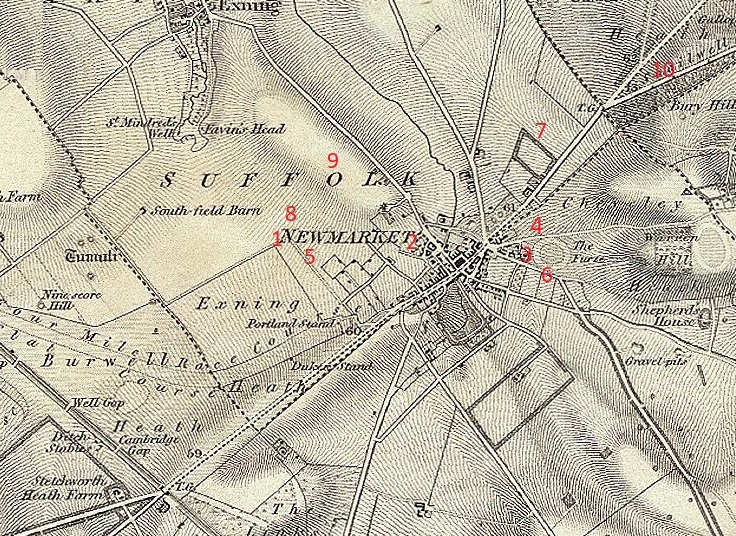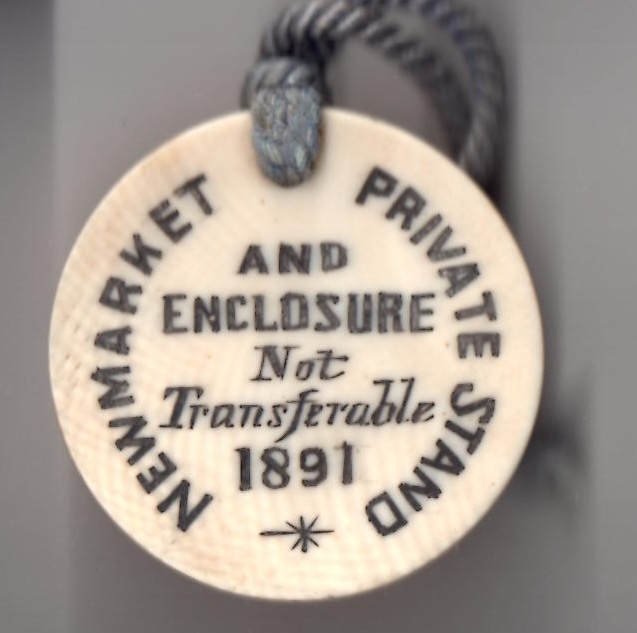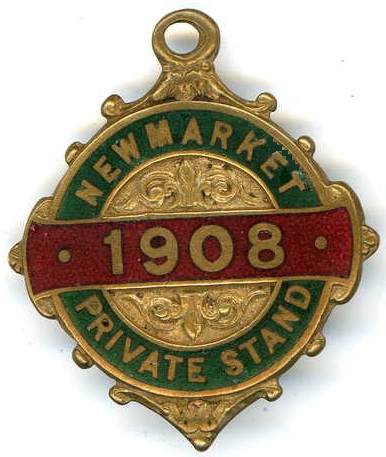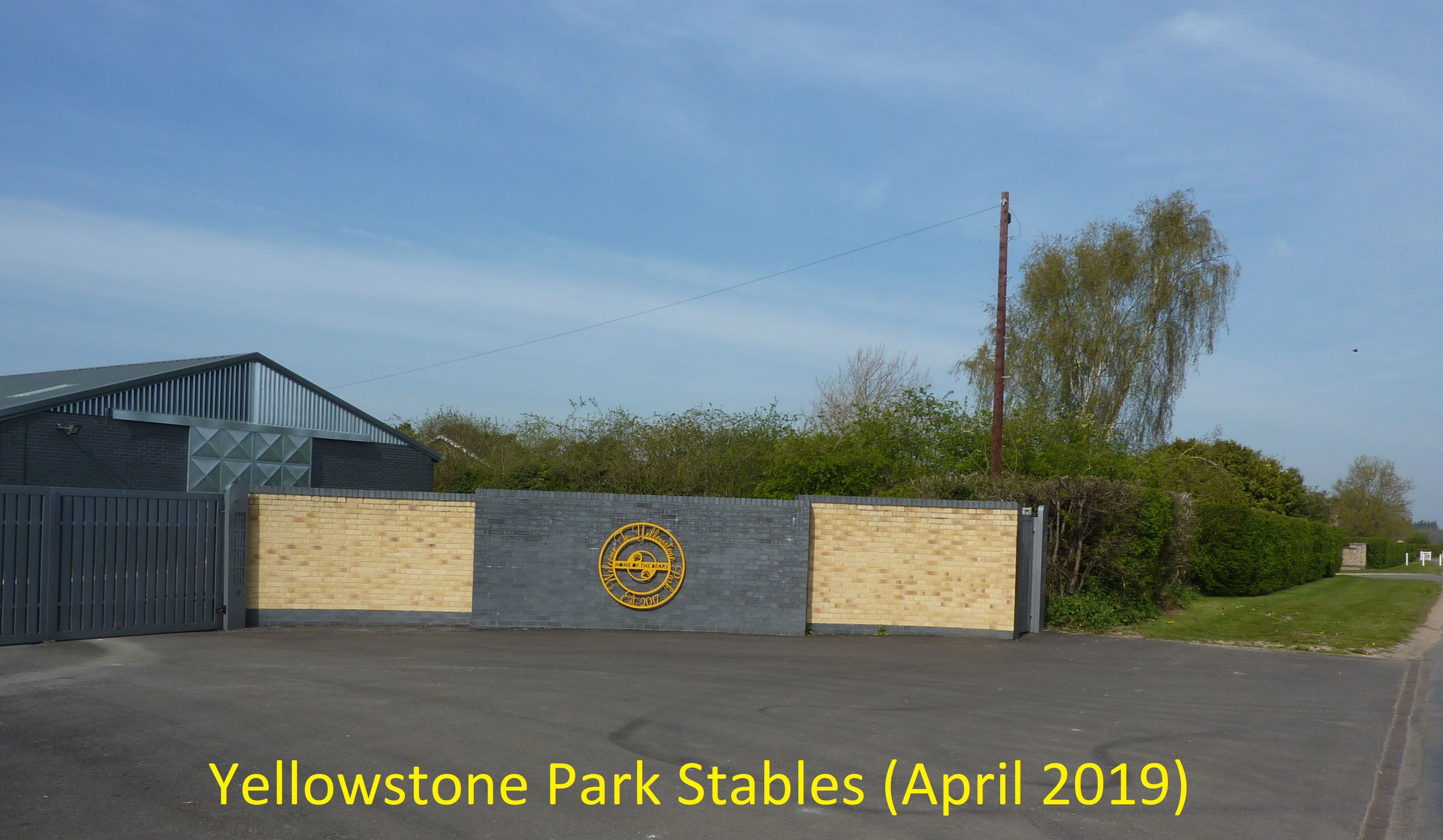Hamilton Road stables
In the mid-1960s a vast area of land, owned by the Jockey Club, close to the Heath, gallops and Rowley Mile course, was earmarked by the Jockey Club to form part of a massive venture aimed at increasing the number of stables in Newmarket, On the Hamilton Road plans were presented for the new stables, and the first to take advantage of the new scheme was former champion jockey turned trainer, Doug Smith. In December 1967, three days before Christmas, Doug announced that he would be moving his string of 30 horses from the yard of his former master, Geoff Brooke, and relocating to a gleaming new yard, the first of several offered to prospective tenants by the Jockey Club. Over half a century on, in 2020 the Hamilton Road contained in excess of 25 such racing establishments, many having changed owners, trainers and stable names on a regular basis since Doug Smith first occupied Cedar Lodge Stables back in early 1968. They offer direct and easy access to all of the Jockey Club Estates facilities and gallops, all within easy reach of the Warren Hill gallops. The Jockey Club cares for 2500 acres of maintained gallops, which includes over 50 miles of turf gallops, and since those early days of 1967 many Classic winners have been sent out from the wide array of Hamilton Road Stables.
For over 4 centuries racing has been staged in Newmarket, but how have the racecourses evolved from an initial starting point at Fleam Dyke Pumping Station, some 8 miles from the town, with a winning post barely 200 metres from the town centre, into two world recognized, excellent racecourses and a universal acceptance that Newmarket is the Headquarters of racing?
To access an interactive racecourse map showing over 50 individually named racecourses CLICK HERE. The map will enable you to:-
1. Determine when extended races over 8 miles, 6 miles and 4 miles began to be replaced by the courses now visited by thousands annually;
2. Consider how the challenge of crossing the Devil's Dyke was overcome;
3. Contemplate why the town no longer has a steeplechase course despite having at least 5 courses during the past 2 centuries;
4. Examine the practicalities of having up to 48 starting posts and winning posts;
5. Appreciate that it was not financially viable to have an open racecourse spread widely across the heath, with a finishing post barely 200 metres from the town centre;
6. Research how and why the Cambridgeshire Handicap has been contested over 3 different courses.
NOTE: The map does not make mention of 2 particular courses:-
(i) Sefton Course (also known as the Cambridge Road Course)
Source: 1970 Raceform. Used from 1959 to 1975.
(ii) New Circular Course
The Circular Handicap was run on Friday 29th October 1875 on the New Circular Course of about two miles.
Source: London Standard (30th October 1875): ''the horses started near the Turn of the Lands, ran back way of the Cambridgeshire Course towards the Ditch, and afterwards proceeded down the side of the Tan Gallop, and turned into the Rowley Mile near the Bretby Stakes starting post, finishing at the stand at the end of the flat. Except in the hollow near the Cambridgeshire start the runners should have been visible all the way if the sky had been bright and clear''.
Another report hoped that the Circular Handicap would become a feature in future programmes, as it would be contested in front of the new grandstand which would be completed in about a year and would be able to accommodate thousands.
(I am grateful to Tim Cox for bringing attention to these 2 courses.)
Enjoy researching the intriguing history of Newmarket and its many racecourses.

Yellowstone Park Stables, a state of the art American Barn 50 box stable, complete with trainer's house, is located on the racecourse and gallops side of the Hamilton Road. It was built for owner Kevin Bailey, and he and his fellow builder, known collectively as the Bears, decided to name their new stables 'Yellowstone Park'. It is situated next to Eve Lodge Stables and Calder Park Stables to its left, and Saffron Stables and Chestnut Tree Stables to its right.
2017-present Hugo Palmer (satellite yard)
Hugo Palmer's main yard is at Kremlin Cottage, but he was presented with the opportunity to expand, taking on the newly built Yellowstone Park Stables on the Hamilton Road as his satellite yard. He leased the 50-box establishment from owner Kevin Bailey in 2017, but they had plans to increase its capacity by a further 14 boxes. Hugo was supported by George Boughey after his return from Australia, where he gained invaluable experience working for Gai Waterhouse in Sydney and Lloyd Williams in Melbourne.


George Peckham
George Peckham operates from Yellowstone Park stables, offering a service of training, breaking, rest and rehabilitation at one of the very latest racing establishments in Newmarket.





